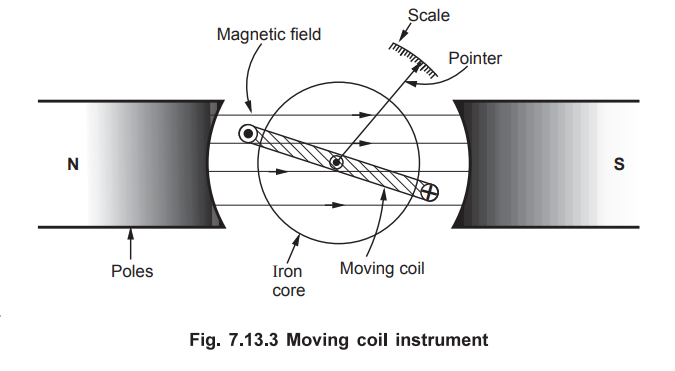Electromagnetic Theory: Unit III: (a) Magnetostatics
Working principle of Practical Applications of electrostatic and magnetostatic fields
• Let us study the working principle of practical applications of electrostatic and magnetostatic fields.
Practical Applications
•
Let us study the working principle of practical applications of electrostatic
and magnetostatic fields.
1. Electrostatic Field
•
The two practical applications of electrostatic field are,
1)
Cathode ray oscilloscope : In the cathode ray oscilloscope,
the electrons ejected by an electron gun are required to be deflected so as to
bombard the screen in a specific manner. This is called focusing in cathod ray
oscilloscope. For such a deflection of an electron beam, an electrostatic field
is used. This is called electrical deflection. While on its way to the screen,
the electron beam is passed through a deflecting field. The field can be
altered by varying the potential across the plates producing the field. The
field produces an acceleration of an electron beam in a desired manner to
strike the screen. For horizontal and vertical deflection, two separate pairs
of plates are used. This is shown in the Fig. 7.13.1.

2)
Ink-jet printer : In ink-jet printer, fast printing on
paper is achieved by deflecting ink droplets in a specified manner. The charges
are sprayed on the ejected droplets from the nozzle and then they are
electrostatically deflected. The paper on which the printing is to be obtained
is set above the axis while the funnel is placed on the axis to collect the
undeflected particles of ink during the pauses between the characters. In this
application, the deflecting voltage is constant while the deflection is
controlled by controlling the charge sprayed on the droplets.
2. Magnetostatic Field
•
The two practical applications of magnetostatic field are,
1)
Rotary motor or generator : Consider a multitum coil placed in
a uniform magnetic field of flux density B with a two segment commutator as
shown in the Fig. 7.13.2. This is an elementary form of a d.c. motor.

When
the coil carries the current, it produces its own flux. This flux interacts
with the magnetic field in which coil is placed. Thus coil experiences a torque
and starts rotating. The electrical energy is thus converted to mechanical
energy.
2)
Deflection in an indicating instrument : Another practical
application of magnetic field is the deflection of pointer in an indicating
instrument. Consider permanent magnet moving coil instrument as shown in the
Fig. 7.13.3.

•
When a moving coil carries the current, it produces its own magnetic field.
This interacts with the magnetic field of the poles. Due to this, a coil
experiences a torque proportional to the quantity to be measured and rotates.
The pointer attached to the coil then indicates the reading on the scale
attached.
Review Question
1. Explain the working principle of any two practical
applications of electrostatic fields and magnetostatic fields.
AU : May-07, Marks 16
Electromagnetic Theory: Unit III: (a) Magnetostatics : Tag: : - Working principle of Practical Applications of electrostatic and magnetostatic fields
Related Topics
Related Subjects
Electromagnetic Theory
EE3301 3rd Semester EEE Dept | 2021 Regulation | 3rd Semester EEE Dept 2021 Regulation
